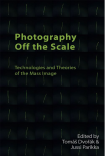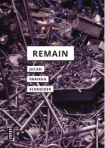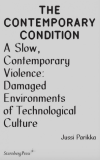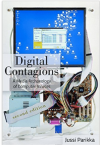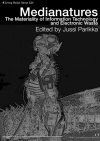Archive
On Practices of Images and Measures of Practice
Out in the new issue of Media Theory
“This conversation between Jane Birkin and Jussi Parikka picks up on two recently published books, Birkin’s Archive, Photography and the Language of Administration (Amsterdam University Press 2021) and Parikka’s co-edited Photography off the Scale (Edinburgh University Press, 2021, with Tomáš Dvorák). The conversation focuses on some of the media theoretical undercurrents of their two books that feature the photographic image as a central part of both their interests, while also shifting to different aspects of institutional practices of images, including questions of logistics of order and enumeration.”
Forthcoming in 2023: Operational Images
First signs of my forthcoming book Operational Images: From the Visual to the Invisual are online. Featured in the University of Minnesota Press new Spring /Summer 2023 catalogue.

An in-depth look into the transformation of visual culture and digital aesthetics
First introduced by the German filmmaker Harun Farocki, the term operational images defines the expanding field of machine vision. In this study, media theorist Jussi Parikka develops Farocki’s initial concept by considering the extent to which operational images have pervaded today’s visual culture, outlining how data technologies continue to develop and disrupt our understanding of images beyond representation.
Charting the ways that operational images have been employed throughout a variety of f ields and historical epochs, Parikka details their many roles as technologies of analysis, capture, measurement, diagramming, laboring, (machine) learning, identification, tracking, and destruction. He demonstrates how, though inextricable from issues of power and control, operational images extend their reach far beyond militaristic and colonial violence and into the realms of artificial intelligence, data, and numerous aspects of art, media, and everyday visual culture.
Serving as an extensive guide to a key concept in contemporary art, design, and media theory, Operational Images explores the implications of machine vision and the limits of human agency. Through a wealth of case studies highlighting the areas where imagery and data intersect, this book gives unprecedented insight into the ever-evolving world of posthuman visuality.
See here for the preface to the book.
The cover image includes a detail from Maria Constanza Ferreira’s video work.
New Czech titles
Now published in Czech, two closely connected books: the translation of What is Media Archaeology? (transl. Michal Šimůnek) and Martin Charvát’s book about my work Jussi Parikka: Od archeologie ke geologii médií (“Jussi Parikka: From Media Archaeology to Geology of Media”). Very excited and grateful to both of them for their work, insights, and careful attention.

The publisher is NAMU press.
Below a short glimpse of the interview we did with Martin for his book (note that the original English discussion has not been tidied so please excuse any minor language hiccups).
<M. C. As I see it, in your work there is a strong tendency present: from the analysis of „dark sides“ of digital culture to geology of media, to the (on the one hand) abstract but strictly material frameworks (or empirical conditions of possibilities) of contemporary digital culture based on using (in a sense of dependency) material from Earth, and to the (on the other hand) urgent need to look at these phenomena through (to put it in Deleuzean terms) “geology of morals”, which transcends a priori critique of technique, and thematizes the usage or cultural techniques emerging in contemporary society and connect them with geo-political climate.
J. P. I was originally trained in Cultural History (in Turku, Finland) which was great background education to consider the broader historical contexts of contemporary culture. It was also a context where I had to do extra work in figuring out how I can continue my theoretical interests while engaging in historical methods. One line of thought that cuts across those themes, those tendencies, is that I am interested in the anomalous, whether that is in relation to the dark sides and accidents of technological culture or in terms of the alternative methodological and conceptual angles that unfold a different perspective. The Deleuzean impact was early on really important for me – I still remember well the course on Deleuze (and a bit on Guattari) that professor Jukka Sihvonen gave in Turku and that I attended together with my friend, media scholar Pasi Väliaho. It was an eye-opener. I did not know how to place it exactly in terms of my other studies but it crept into some work I did in Finnish (including a book that was published in Finnish, Koneoppi) and then to some themes in Digital Contagions that was also my doctoral project that later turned into a book. Another influence was Friedrich Kittler, also introduced by Sihvonen, and whose work then became a different way of trying to start thinking questions of materiality which led into discussions also in new materialism from a much more material feminist position. Rosi Braidotti’s seminars in 2005 were another eye opener.
But in terms of the theme of the anomalous – it does not necessarily mean even marginal. Just that from Digital Contagions to later work, I was trying to come up with questions that are not necessarily at first obvious; conceptual twists that offer different perspectives while building on existing theoretical and scholarly traditions, but also rhetorically are able to frame a different way of understanding those conceptual entities inside “media studies” but also way outside it.
The geopolitical that includes Earth energies is far from marginal but I felt a necessary way to continue the link between conceptual work, extended media studies perspectives, and burning contemporary topics. I was trying to avoid it being merely a contribution to the Anthropocene debate about this new geological period defined by industrialism, synthetic chemistry and massive scale of agriculture, the nuclear age and mass exterminations of multiple kinds – including as many have pointed out, colonial time scales – and think of ways how the question of materiality can be placed in questions of ecology. Geology of morals turns into a Robert Smithson inspired large-scale, landscape-scale changes impacted by media and technological culture that also challenges models of agency and definitely forces non-anthropocentric perspectives both in analysis and in coming up with ethical solutions. To riff with Braidotti’s ideas: it was the ideal of the human in the modern Western humanism that got us into a lot of trouble with its colonial human (able-male) centric ways of organizing worldviews; now we are in the midst of a larger transformation where other questions have to be brought forward for a more radical sustainable future.
[…]
M. C. Currently you are the head of GAČR EXPRO project at Prague Famu. Could you elaborate please a little bit about the topic of the research? (Operational images)
J. P. Operational images is a concept that stems from the filmmaker Harun Farocki’s work and investigations. Already in his work in the 1980s and 1990s he mapped visual forms of measurement and rationalization of the world in relation to political history, violence, holocaust, and industrial scale violence although the concept emerges in a more articulated form in the Eye/Machine video series of installations between 2000-2003. While Farocki’s work is interesting as such – in how it articulates themes of proximity/distance, visuality/calculation, war/media – our project picks up on the concept itself: operational images as images that function primarily as part of a (technical) operation like in the case of self-guided missile systems, machine vision systems, robotics, etc. The concept has had a vivid afterlife following Farocki and it pops up in use by theorists and artists such as Hito Steyerl and Trevor Paglen, as well as in works by many of the colleagues in media studies etc., but we are interested both in how to use it as a concept to outline alternative histories of photography and visual culture and to open up new questions in contemporary contexts of art and visual theory.
For example, I am working with Abelardo Gil-Fournier on outlining questions of vegetal materiality and visual culture, from late 19th century plant physiology and framing of photosynthesis to broader scales such as in Vladimir Vernadsky’s take on the planetary biosphere. We are interested in how from questions of photography and visual culture we can outline a take on operational images in scientific contexts, planetary scales of plants and agriculture, and this refurbishing of the planet by way of terraforming that has taken place for example indeed in agriculture.
Of course the project incorporates more than that. Tomas Dvorak’s investigations into photography as measurement is one insightful way of dealing with the overlap between methods in history of science and media; previously, our conference theme was on Expert-Readable Images expanding the idea of machinic agency of images (Machine-Readable) to the work of experts and specialist practices too. Also our book Photography off the Scale that came out in 2021 with Edinburgh University Press included contributions from our project team on the question of measure, scale, and quantity in photographic culture.
The book Operational Images. From the Visual to the Invisual is forthcoming from University of Minnesota Press in 2023.
Operational Images – Preface in the forthcoming book
I submitted the manuscript for the book Operational Images (part of our project Operational Images and Visual Culture) to the publisher, University of Minnesota Press. The book is forthcoming in 2023, but for those of you interested in a sneak preview, please find below the Table of Contents and the Preface (without the endnote references though) that starts the book.
Table of Contents
Introduction: Between Light and Data
Preface: Operational Images, All the Way Down
Chapter 1: Operations of Operations
Chapter 2: What is Not an Image? On AI, Data, and Invisuality
Chapter 3: The Measurement-Image: From Photogrammetry to Planetary Surface
Chapter 4: Operational Aesthetic: Cinema for Territorial Management
Chapter 5: The Post-Lenticular City: Light into Data
Chapter 6: A Soft Montage of Operations
Preface: Operational Images All the Way Down
This book focuses on operational images, a concept that first emerged in Harun Farocki’s audiovisual work (films and video installations) and writings. The often-voiced but almost as often insufficiently developed definition is simple, and it is already somewhat evident in the term itself: there are some images that primarily operate; they are not necessarily representational or pictorial. Operational images trouble what an image is, as far as it shifts from representational to non-representational, from the primacy of human perception of bodies, movement, and things to measurement, pattern, analysis, navigation, and more. They change the scales and terms of reference. Such images have an epistemic force, while they also are involved in an intervention in the world, whether directly or indirectly. These sorts of images fix epistemic details, but while they hold them in place, they also are mobile in ways that become an essential part of their institutional activity. These points are explored in the pages that follow.
Operational images appear most often in discussions of machine vision and automation of perception, where images are part of a broader system of analysis, identification, tracking, and destruction. The term operational image seemed to speak directly to the period from, roughly, the first Gulf War in 1990 to the current phase of military and security management of territories with drones as part of an ecology of observation, analysis, and surveillance. Even a brief survey of Farocki’s films and existing literature reveals these thirty years of militarized airspace and technological systems that incorporated much of the already existing logic of targeting would be a straightforward implication of the term. However, this is not to say that this book is primarily about war or airspace, or surveillance or drones–even if such are central parts of the theme that admittedly ranges much further in the past than just the context of smart weapons and machine-readability of landscapes, territories, and objects (including people). It was also not the sole interest in Farocki’s work, especially if we consider how, for him, operational images emerged in architectural modeling, traffic control systems, construction of affective environments such as malls, and other examples that have also paved the way toward current topics of AI culture. Furthermore, this book is also not merely about a particular class of images that emerge in high-tech contexts, even if, again admittedly, it is about visual culture and its transformation into invisual data culture. We are not seeking an aesthetics or politics of digital images. There are plenty of books on these topics already, and many of them are consulted and discussed in this one, too. Thus, there is no need to write yet another take on digital visuality or digital images, or perhaps even about visual culture.
This book is about a needed shift in emphasis to the operational image. From a discussion of the image, its particular formats, and even its functions, we move to a different, albeit closely related question that concerns operations, a key term that ties to infrastructures, logistics, and all manner of actions that function to sustain, mobilize, analyze, and synthesize the thing we have grown to call “images”. I am after the coupling of perception and action, of images that control, regulate, and amplify how bodies operate.[1]
Both perception and action are terms defined in the course of this book: perception is not tied to any natural experience, optical capacity, or even a technique, and the action in question is not necessarily only the here and now of a human body but defined by more tricky causalities–including a relation to the temporality of futures, future-pasts, recursions, and more. In other words, operations do not act only on the present but across a broader timescale, including a temporalization of space (e.g., in forecasting systems).
Allow me to offer a guiding rhetorical figure that should be considered throughout this book as part of its conceptual scaffolding.[2] Operationalism is already an established term in scientific methodological literature[3], but also consider the rather famous and often overused parable of the turtle at the base of the universe. The narrative comes and goes in different forms, this one written down in Carl Sagan’s Broca’s Brain:
“Some ancient Asian cosmological views are close to the idea of an infinite regression of causes, as exemplified in the following apocryphal story: A Western traveler encountering an Oriental philosopher asks him to describe the nature of the world: “It is a great ball resting on the flat back of the world turtle.” “Ah yes, but what does the world turtle stand on?” “On the back of a still larger turtle.” “Yes, but what does he stand on?” “A very perceptive question. But it’s no use, mister; it’s turtles all the way down.”[4]“
Instead of turtles, the history of photography, technical images, and visual media could be told in the same key: instruments built upon instruments, upon infrastructures, upon practices, upon techniques, upon further instruments and infrastructures, and so on. Operations built on operations that include elements that are material and semiotic, forms of knowing, and forms of mattering. As Geoffrey Winthrop-Young points out, such turtled ontology is also shared by the cultural techniques approach in media theory, concerned with “operational sequences involving actors, things and practices that, coming together, give rise to established cultural practices.”[5] Could the same then be said about the operational sequences involving images? That there is a fundamental relational ontology at play, one that could be described by way of scaffolding operations? At the very least, we can confidently concur with Michelle Henning when she writes that “[t]he Victorian idea of the photograph as an image that makes itself no longer holds sway.”[6] This applies to the specific fantasy of unmediated images drawn by sunlight and practices of sensing and registering signals as images and diagrams.
Joseph von Fraunhofer’s 1810s invention of the spectrometer–a later backbone of remote sensing and the analysis of materials through their spectral fingerprint–represents but one case from the alternative history of visual technologies. To verify and measure the dark lines existing in the solar spectrum–later named Fraunhofer lines–the spectrometer apparatus was an assemblage of multiple elements, camera-like technologies (six lamps and a shutter), a prism, and a modified theodolite: “an ordnance surveying instrument originally designed to measure angles for the production of maps.”[7] As Susan Schuppli writes: “His work would eventually come to be used by scientists to determine the chemical composition of a remote object–our sun, some 149.6 million kilometers away–not through direct testing but by treating it as an image, one whose chromatic variance could be translated into the complex language of chemistry.”[8] Treating the world as an image beyond its pictorial qualities is one key site where operations of epistemic value take place–but there are multiple operations already in place that produce such images. Fraunhofer’s laboratory set-up can be described as an essential part of the history of science of discovery of the qualities of the solar spectrum, but as an artificial set-up of said spectrum, it is also a microcosmos of light–even of interplanetary light. It is a simulation of the behavior of solar light, too, which then introduces the possibility of using this standardized view of the dark lines on the continuity of the spectrum to scale up and down across light and materials. All sorts of material instruments and scalar operations are piled upon each other, explicated and implied.
As photography (and yet not entirely just photography), Fraunhofer’s apparatus was a camera of sorts–one built like turtles on top of each other. I would go so far as to say that Fraunhofer’s apparatus represents one central instance of the history of operational imaging vis a vis remote sensing[9] and that what was captured was not a picture in the traditional sense but a microcosmos (or a condensation of its visual characteristics) through a detailed concrete arrangement that facilitated this diagram of the abstraction to emerge, and it demanded a precise need for accuracy in the placement of angles and distances, a measurement-operation in its own right.[10]
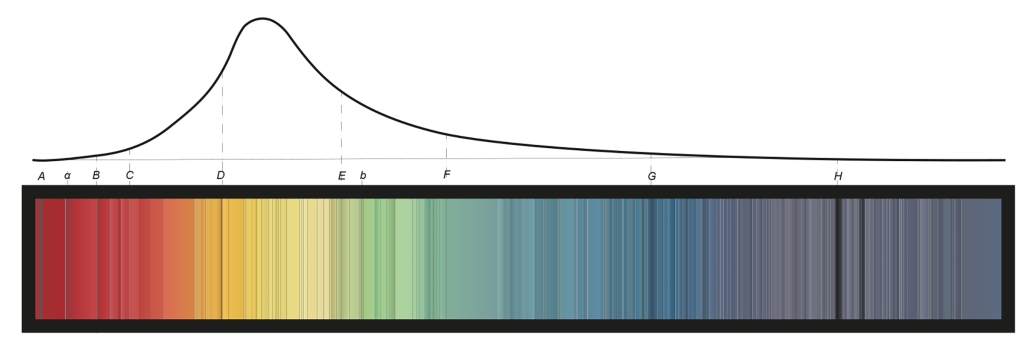
The recursive world of turtles and their relations–or camera-like instruments in laboratories and solar light–is a helpful figure of thought. At the same time, a more conceptual reference point for such operative chains of support is likely to be found in the theoretical work of cultural techniques and operative ontologies. But more on that later.
To answer the question that likely has emerged, what is this book about? It is not about turtles, but operations all the way down: images that exist only because of other operations–and the operations that help us to understand the transformation of images from visual to data. One could justifiably argue this point about cinema already, as Thomas Elsaesser speculates about Farocki’s interest in simulations as not a replacement of reality but a chain of synthesis–“the downward spiral of simulation of a simulation of a simulation”[11]–that pertains to cinema and post-cinema. In our case, we instead place emphasis on the operational transformation of the link between visuality, photography, spectral analysis, and data–a transformation that did not happen with digital culture, but circa 1900, as the story that follows will show you.
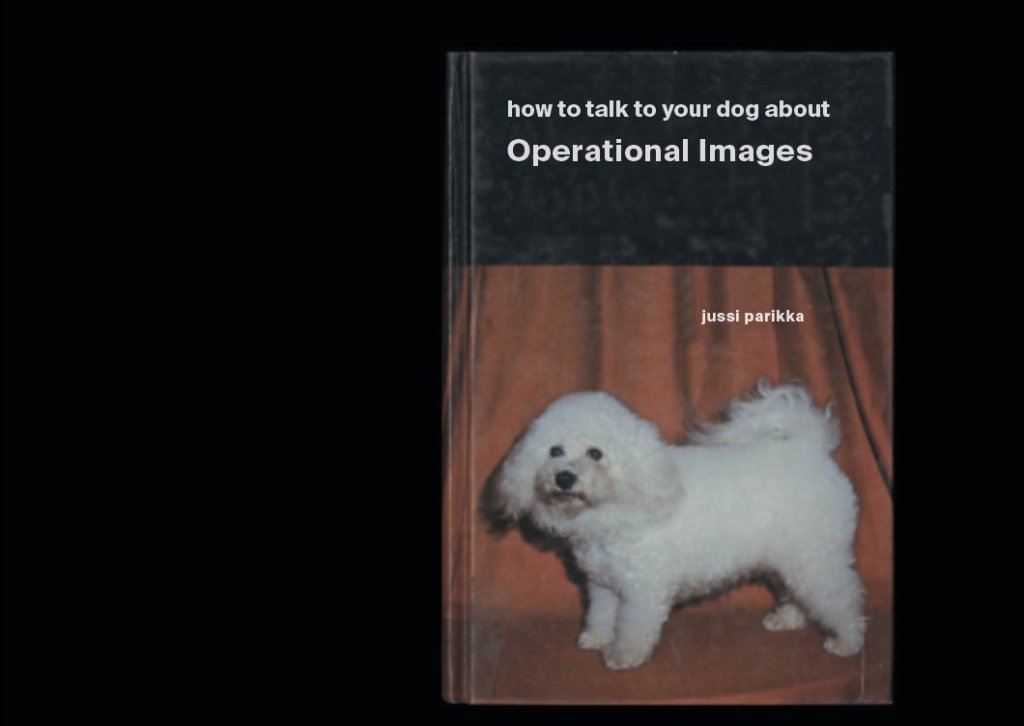
Photography Off the Scale is out
Our book Photography Off the Scale is out and available! Edited by myself and my FAMU colleague Tomáš Dvořák it offers an interdisciplinary perspective on the scale and quantity of images in contemporary visual culture. From the mass-image to post-photography, AI to online visual culture, planetary diagrams to LIDAR, the breadth of topics is wide. The book emerges from our Operational Images and Visual Culture project (FAMU, Prague – and funded by the Czech Science Foundation, 2019-2023).

Here are the really nice blurbs from Lev Manovich, Lisa Parks, and Peter Szendy:
“Among the many fundamental changes taking place in contemporary photography and media culture, probably the most important are changes in scale. The new magnitude of image production, the instant global dissemination of billions of new images, and the adoption of AI that turns these images into big data are only some examples of how the visual has been “scaled up” in the 21st century. Now we finally have a first book that rethinks the history and theory of photography through the lens of scale – and connects this concept to a range of others including measure, politics, gender, subjectivity, and aesthetics.”
– Lev Manovich, Presidential Professor, The Graduate Center, City University of New York
“Someone takes a picture somewhere in the world. Such a trivial action is multiplied by a trillion. Or much more, since the majority of pictures today are produced by machines for machines. This collection of essays brilliantly explores the unheard-of effects of scale on the ontology of photography and it touches upon the sublime of the infinity of digital images.”
– Peter Szendy, Brown University
“This book’s refreshing and much needed take on photography cuts through the infoglut and explores the apparatus, infrastructure, and operations of contemporary pictures. Addressing everything from snapshots to machine vision, Photography Off the Scale unfurls a vital field of technology, politics and aesthetics reshaping the world.”
– Lisa Parks, Distinguished Professor of Film & Media Studies, University of California-Santa Barbara
With Tomáš, we wrote a substantial introduction outlining the stakes of the approach – how it relates to scholarship in photography and links it to key questions of digital culture – and we are really pleased with the whole lineup of the book:
Introduction: On the Scale, Quantity and Measure of Images
Jussi Parikka & Tomáš Dvořák
Part I: Scale, Measure, Experience
1. The Mass Image, the Anthropocene Image, the Image Commons
Sean Cubitt
2. Beyond Human Measure: Eccentric Metrics in Visual Culture
Tomáš Dvořák
3. Living with the Excessive Scale of Contemporary Photography
Andrew Fisher
4. Feeling Photos: Photography, Picture Language and Mood Capture
Michelle Henning
5. Online Weak and Poor Images: On Contemporary Feminist Visual Politics
Tereza Stejskalová
Part II: Metapictures and Remediations
6. Photography’s Mise en Abyme: Metapictures of Scale in Repurposed Slide Libraries
Annebella Pollen
7. The Failed Photographs of Photography: On the Analogue and Slow Photography Movement
Michal Šimůnek
8. Strangely Unique: Pictorial Aesthetics in the Age of Image Abundance
Josef Ledvina
Part III: Models, Scans and AI
9. On Seeing Where There’s Nothing to See: Practices of Light Beyond Photography
Jussi Parikka
10. Planetary Diagrams: Towards an Autographic Theory of Climate Emergency
Lukáš Likavčan & Paul Heinicker
11. Undigital Photography: Image-Making Beyond Computation and AI
Joanna Zylinska
12. Coda: Photography in the Age of Massification
Joan Fontcuberta & Geoffrey Batchen
The book is published by Edinburgh University Press and is part of their Technicities book series. A special thanks to Elise Hunchuck for her outstanding expertise in helping us to fine-tune the writing and to Abelardo Gil-Fournier for the cover image that comes from his project Bildung.
For any inquiries about the book, review copy requests, etc, please contact me or Tomáš.
Images Beyond Control
The next in line of our Operational Images and Visual Culture project’s events at FAMU at the Academy of Performing Arts in Prague takes place on November 6th. After our previous events Photography Off the Scale and Expert-Readable Images, this one is titled Images Beyond Control. Michal Šimůnek and Josef Ledvina from our project team took the lead in developing the theme that makes reference to two key centennials closely related to Prague – the birth of Vilém Flusser, and Čapek brothers’ invention of the word robot.
You can find the program, a longer description, and the instructions on how to join on Zoom or YouTube here!

+ Thanks to Abelardo Gil-Fournier for designing the poster.
Seed, Image, Ground
The new video essay Seed, Image, Ground is the most recent example of our collaborative work with Abelardo Gil-Fournier emerging from our project on vegetal surfaces and media aesthetics. Launched today, the video was commissioned by Fotomuseum Winterthur as part of their cluster Situations/Strike. Below the introduction text and the video! Please contact me or Abelardo for any queries related to possible video installation versions of the piece.
***
Seed, Image, Ground (2020)
Seed bombing is a technique used in forestry, agriculture, and environmental restoration where biodegradable containers filled with seeds and soil nutrients are dropped from flying aircrafts to the ground. Conceived after WW2 by an RAF pilot, its use has been fostered during the last decade, linked to the increased deployment of robotic aerial vehicles in environmental monitoring.
Seed, Image, Ground works with selected promotional images and videos related to seed bombing. It combines them with footage showing the movements of seeds and leaves, and the growth of plants. The video essay concerns the link between images, seeds, aerial operations, and transformation of earth surfaces into data. It acknowledges how the history of botanic knowledge and visual surveys of green surfaces is a history of images, and how the latter is also a history of circulation, speed, and motorised aircraft. Such images operate much beyond visuality.
Seed, Image, Ground offers an alternative way of understanding “the strike.” From metaphors of war to guerrilla farming, from agricultural techniques and reforesting to the automation of airspace and environmental management, the observation of growth of vegetal surfaces unveils connections to parallel histories of the logistics of military perception.
Sound design by María Andueza Olmedo. Research for the video essay was supported by the project Operational Images and Visual Culture, situated at the department of Photography at the Academy of Performing Arts, Prague. The project is funded by Czech Science Foundation project 19-26865X.
Expert-Readable Images
Welcome to our Operational Images project event on Expert-Readable Images at the end of November in Prague at FAMU part of the Academy for Performing Arts. Please find below a short description of the event and list of invited speakers. The event is organised by Dr Tomáš Dvořák (FAMU) and myself together with the project team.

Expert-Readable Images
November 29, 2019 – FAMU in Prague
While machine-readable images have become a constant reference point for photographic theory and contemporary visual media studies, our event turns to the question: what are the specialised expert-readable image practices that cater to the technical specifics, institutional demands, and particular knowledge-roles of visual culture?
Recent discussions of operational images as well as technical media and visual cultures often invoke the distinction between human and machine vision. Automated visual systems are claimed to produce images by and for machines, pictures that are unreadable or even invisible to human eyes. Our conference seeks to complicate this dichotomy by addressing the field of professional perceptual skills, trained judgment, and expert practices of observation and instruction. Should we consider specific thought styles (to borrow a term from Ludwik Fleck) and thought collectives that develop simultaneously with the technologies of instrumental imaging and visualizing? What does a doctor see in a CT scan? What does a drone operator see on a monitor? What does a statistician see in a graph? What does a forensic analyst see in a digital model? What does a content moderator see in our holiday memories? What are the particular cultural techniques of practice, of training, and operation that govern these relations to images?
The one day day conference gathers specialists from fields of media, visual culture, photography and science and technology studies (STS) to engage with the world of specialised technical images. We shift the focus from machines to the training and governance of humans who deal with those images.
For any queries, please get in touch via email at jussi.parikka@famu.cz.
Poster design: Abelardo Gil-Fournier.
Aesthetics/Politics/Technology – A Czech Interview
This video interview made with a Czech platform is now online and available. Recorded during Spring 2019, it was done also in the context of my FAMU visiting scholarship in Prague and discusses questions of aesthetics, politics, technology, deep times, anthrobscene, materiality and more.
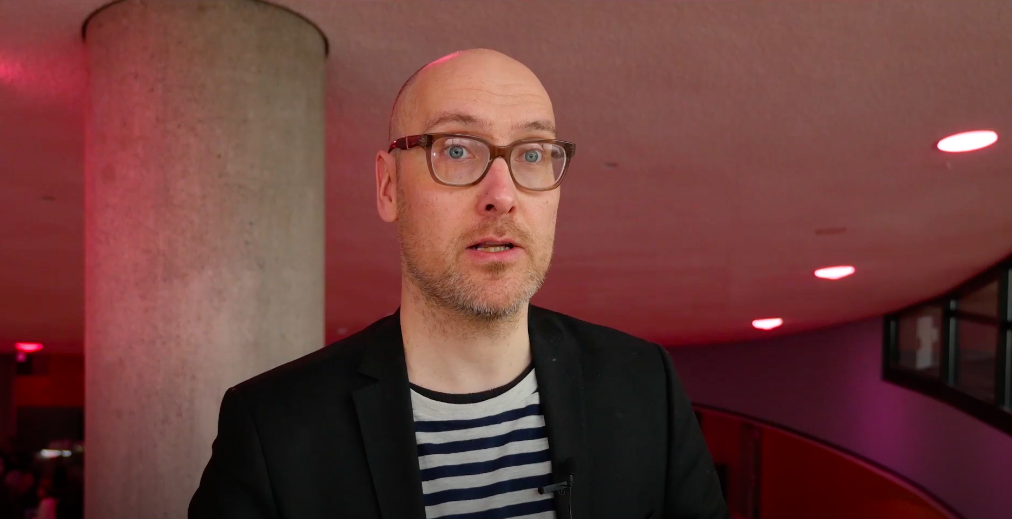
Click here for the full video interview.
My work with FAMU continues in the context of the Operational Images project until end of 2023.
Operational Images project funding
Some news: I am happy to announce that we have won a large grant for our proposal “Operational Images and Visual Culture” with colleagues at FAMU, photography department, part of the Academy of Performing Arts, Prague. Funded by the Czech Science Academy, our research team will engage with contemporary visual culture, photographic theory and the notion of operational images that stems from Harun Farocki’s work. The project is not solely focused on Farocki but the concept of the operational – sometimes translated as operative – image becomes one of the guiding lines of inquiry that facilitates useful, interesting and alternative ways to understand media archaeology of technical images (as patterns, as measurement, as instructions etc.) and contemporary practices of photography. Automated, instructive, algorithmic, measuring and non-representational images are here part of our focus that stems from some of the discussions of past year’s of media, film and visual theory.
FAMU has a great reputation, not least as a renowned film school and I have had the pleasure of collaborating especially with Dr. Tomáš Dvořák over the past year on other projects already. Stay tuned for updates from our Operational Images project and please get in touch if you have any questions!
The Project’s FAMU website for further info.


